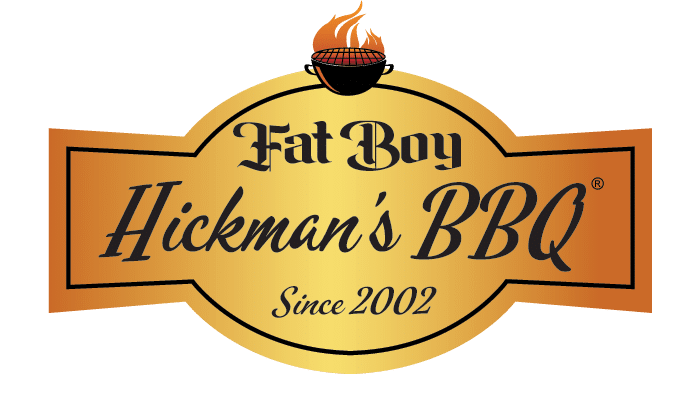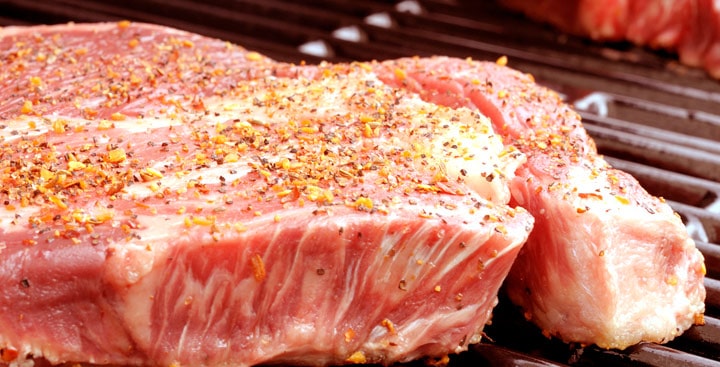Around The Smoker
Steak 101: What’s With The Types of Steaks Anyway?
We’ve all done it – we have our huge cart of groceries at the store blocking the meat section while we scratch our heads trying to decide which steak to buy (and yes, we’re guilty of the huge car kid cart that takes up nearly an entire aisle – sorry about that). The key to picking the best steak is understanding the difference between steaks. And yes, with steaks the old adage is true … you get what you pay for.
Lets start with the basics when it comes to the types of steaks. There are five categories: Filet Mignon, Boneless Strip, T-Bone and Porterhouse, Ribeye and Sirloin.
Filet Mignon
Since we’re based in Nebraska, we can’t go to a halfway decent restaurant and not find Filet Mignon on the menu – front and center. There’s a reason why – it’s a choice cut of meat. It is the best of both worlds, lean and tender. This melt-in-your-mouth steak is cut from a small internal muscle of the cow that rarely gets used, keeping it incredibly tender. The fact that it is harvested from such a small portion of the cow and is one of the most demanded cut also makes it more expensive. This isn’t your everyday steak – keep it for special occasions. If you like to marinate, be sure to keep it short. It takes to marinating well and can easily get over saturated. Be sure to limit it’s time on the grill too, as the lack of marbling will make it dry out quickly. Here in the beef state, most people will order it medium-rare to make sure it doesn’t get over cooked.
Boneless Strip Steak
If you like more marbling, this is your cut. Tender and sizable, it’s a great starter steak. Usually coming in around 12 oz, it takes to marinating easily and has an abundant flavor. We recommend keeping it at medium or rarer or it will dry and get tough. Great for casual meals, it is less costly than the Filet Mignon.
T-Bone and Porterhouse
If you think the T-Bone is a different type of steak that we’ve been talking about, you’d be wrong. All a T-bone is is a filet on one side and a strip on the other – with a bone right in the middle. This is for the hungry – usually coming in around 16 oz. If it has a more generous filet – it’s called a porterhouse. This one can be tricky to grill because the tenderloin side will cook faster than the strip, and the beef closest to the bone will tend to be rarer – so we don’t recommend this one for the starter grill master. The best way to ensure even cooking is to put the strip side to the hotter part of the grill, and the filet toward the cooler end.
Ribeye
Here in Nebraska if we see a bone-in ribeye on the menu, it feels like a treat. They’re pretty hard to come by. It is one of the most flavorful cuts of meat, and in a restaurant will usually will put a dent in your pocketbook. When shopping at the grocery store, however, it is a more moderate price. Ribeyes can come bone-in and bare, with the bare easier to find. They are a highly marbled cut making it exceptionally juicy and flavorful. Cooking it on a high heat will help seal in the juices, and can easily be cooked to medium without losing the juiciness. Great for a cookout if you want to impress your neighbors.
Sirloin
The sirloin cut comes from a more highly used muscle in the body, making it less tender than all the other cuts. If you want a little more tenderness, be sure to pick the top sirloin cut. The cheapest cut in the store, it’s great if you’re on a budget, but be sure to keep it medium or rarer or it will get dry quickly. If you over cook it, it could easily be used as a frisbee instead of the main dish at your next cookout. We recommend marinating it first (be sure to poke holes in the steak before marinating to let the flavor work its way through). It’s price makes it ideal for large gatherings.
Stay tuned for our next blog, Steak 101: Rare, Medium & Well Done. We’ll discuss how to know what temperature your steak is at and hopefully dispel any fear you might have of that word “rare”.

